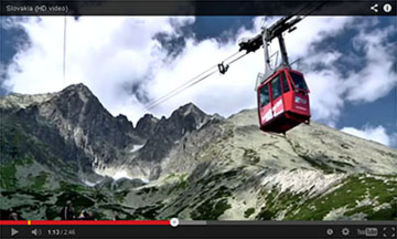ŽILINA is the metropolis of the north-west of Slovakia, a town at the confluence of three rivers - the Vah, the Kysuca and the Rajčianka, and the fourth biggest town of the Slovak Republic. It is the seat of the Žilina Self-Governing Region and a gate to the region of Horné Považie.
HISTORY
The first reference to the territory of Žilina as we know it today is from 1208 and it is referred to as "terra de Selinan" (Žilina territory). King Charles I. Robert of Anjou granted the town economic liberties in 1321.
One of such documents, highly appreciated by Slovaks, is the "Privilegium pro Slavis Solnensis" issued by King Louis I the Great in 1381. The privilege was to ensure the right of parity representation in the town council for Slovak burghers living in Žilina that would be equal to that of the German population of the town with whom the Slovak burghers had a dispute concerning the equal participation of Slovaks in the town council, as the Slovak population had a majority in the town.
Žilinská kniha (Town Book of Žilina) is another valuable archive, linguistic and historical document of European importance. Its origin can be traced back to 1378. Historians consider this unique book to be a very precious written relic as it contains the oldest written entry in the Slovak language in the territory of Slovakia.
The economic development of the town came after the construction of the Košice-Bohumín Railroad and the railway tracks between Žilina - Bratislava, and Žilina - Rajec at the end of the 19th century. The town became an important traffic junction, which was the impetus for its industrial development and population growth. Further development of the town continued after 1990.
MONUMENTS
Sights in the historic centre of the town are a part of the Town Monument Reserve.
An architectural dominant of the town is the Baroque Church of the Conversion of St. Paul the Apostle with two towers and the Capuchin monastery from the mid-18th century. They are situated in a square-shaped Mariánske námestie square with the typical porticoes. The Old Town Hall in the corner of the square has undergone several reconstructions. Its present appearance is from 1890.
The Most Holy Trinity Church (Cathedral) was built around 1400 on the site where there used to be a castle in the 13th century. The Burianova veža tower standing near the church is one of the oldest Renaissance belfries in Slovakia. It is a detached building and its design resembles that of Italian municipal belfries called campanillas.
The Church of St. Stephen the King in the part of town called Dolné Rudiny is the oldest preserved architectural monument in the territory of Žilina. Experts date the origin of this Late Romanesque church to the 13th century. Its interior ornamentation is especially valuable.
The Castle of Budatín is the dominant of the northern periphery of Žilina. The Castle has a unique exhibition of tinkers trade products, the only one of its kind in the world. The Castle is to be under construction by 2013.
Author: TIK mesta Žilina
Source: Vydavateľstvo Dajama, TIK mesta Žilina




































